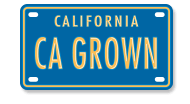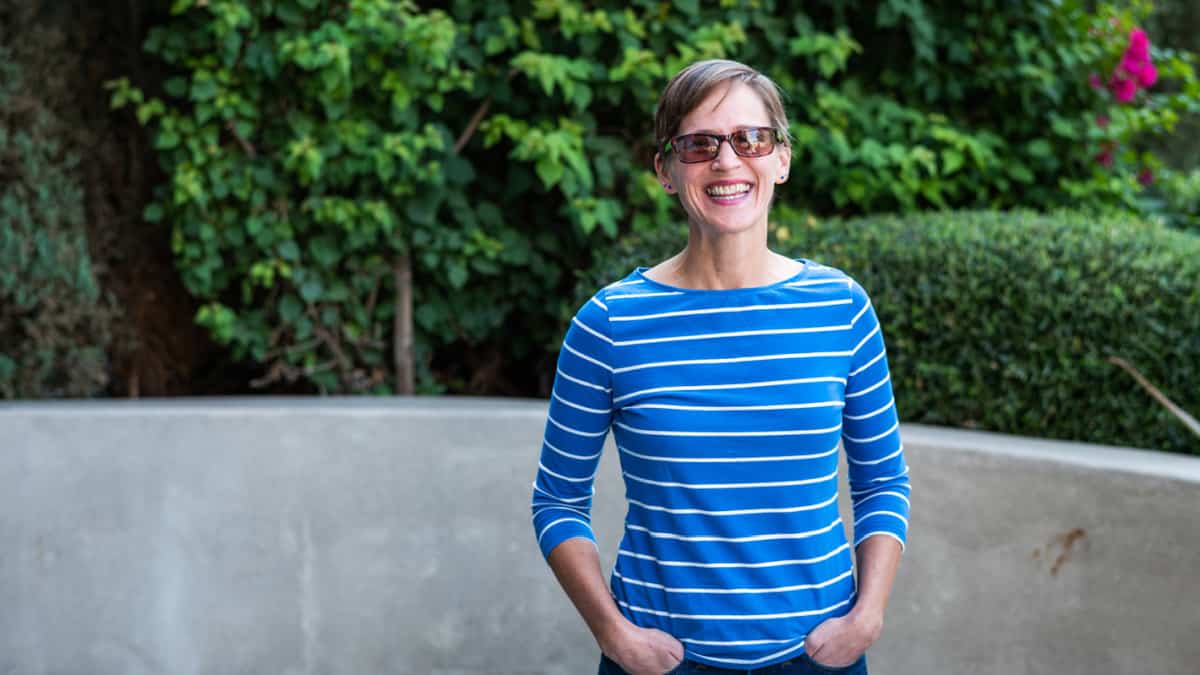Amber Stott is leading the battle for food literacy. What’s your super power?
Amber Stott is a genius, a food genius to be exact. It says so on her business card. We caught up with the founder of Food Literacy Center in Sacramento, CA to learn more about her mission to tackle the inequities surrounding access to healthy foods, one veggie at a time.
Not your typical origin story…
Have you ever read a book or heard a news story and felt completely convicted? Back in 2008, in the wake of the recession, people started talking about food insecurity and how it disproportionately affects women and minorities. Books championing locally grown, plant-based eating, like Animal Vegetable Miracle and In Defense of Food, were at the top of the New York Times bestseller list, and Amber Stott read them all. An avid reader with a masters degree in both Women’s Studies and African Studies, she quickly made connections between the two issues. She remembers thinking, “Something’s not right. We have the best food in the world. You shouldn’t have to read 42 books to make a decision at the grocery store. This type of thing needs to be taught in kindergarten.” At this point, most people would keep reading about the issue, or maybe talk to their friends about it over drinks- but Amber decided to actually do something about it. She started teaching food literacy at a local elementary school.
You might not know what “food literacy” is, and that’s completely understandable. “We wrote the definition for food literacy. I made it up,” Amber laughs. Food literacy is understanding the impact of food choice on our health, environment and economy – and understanding that these impacts are not experienced equitably. Amber’s mission is to create awareness that our food choices don’t only affect our personal health. They have a broader impact on worker’s rights, food safety and even climate change.
How do you fight an invisible foe?
Once Amber had defined food literacy, she decided that the first step in combating these issues was inspiring kids to eat their veggies. Amber formed a committee with expertise in education and nutrition, and began to develop a food literacy curriculum. The idea was relatively straight-forward. Amber wrote a lesson and a recipe. She then presented it to the committee, who would weigh in on accuracy, delivery, and age appropriateness.
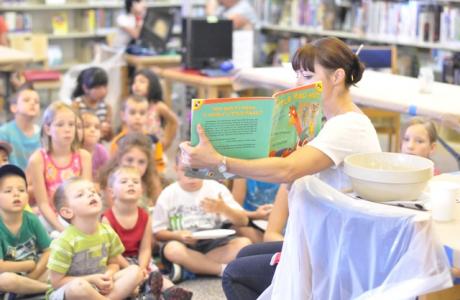
In 2012, Amber taught her first food literacy lesson at a Title 1 elementary school in Sacramento, teaching back to back after school classes – with a whopping 50 kids in each class. Before long, people were talking about the Food Literacy program. “First, we got an intern,” Amber recalls, “then volunteers and attention. Word spread and schools started calling.”
Every superhero needs a base…
By 2013, the Food Literacy Center had expanded to three schools and began to train the first of many “Food Geniuses”. A few years later, with letters of support from big names like Alice Waters, the Food Literacy Center began to talk with the city and school district about a strategic partnership designed to teach food literacy to low income schools throughout the Sacramento Unified School district. Ultimately, this resulted in a first-of-it’s kind project, Floyd Farms, the physical “center” in the nonprofit’s Food Literacy Center.
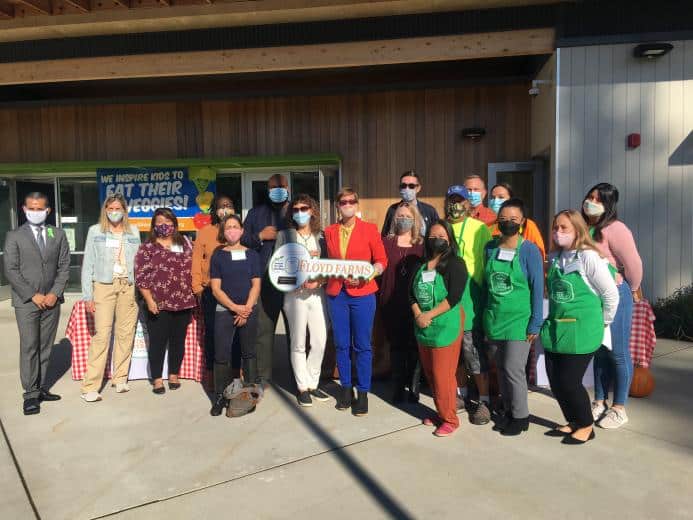
Floyd Farms is a 2.5 acre property adjoined to Leataata Floyd Elementary school, featuring a state of the art, 4500 square foot zero energy teaching kitchen and classroom facility. The space will ultimately feature a large-scale community garden and a green space complete with pathways and trees for local children to run and play.
Another encouraging sign of change- historically, school districts spend only 11% of their facilities budget on Title 1 schools. Rather than building Floyd Farms in a trendy area of town, they chose the location with the greatest need for this type of program. “Across America, our cities are not designed equitably. Some zip codes have parks and sidewalks and grocery stores, while the next zipcode has nothing. This has only been called out in recent years but movements have been building around this issue. Our center, in my mind, helps to resolve this in one neighborhood. It’s huge to see them invest in this,” Amber explains. “We believe in the overall health of our students.”
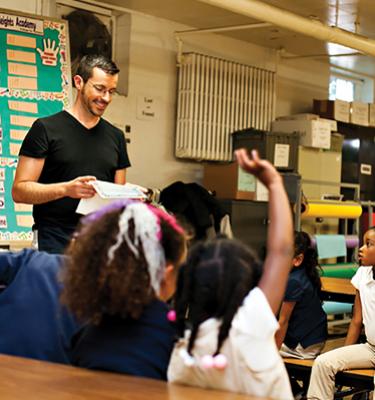
The new center will allow students and their families to participate in hands-on cooking lessons, while continuing to teach students how food choices affect their health, the environment and the economy. Because these lessons are geared towards lower income students, they often provide practical information, like which farmer’s markets accept EBT, or offer match programs. Ultimately, Amber says the biggest focus is on health. “We’re trying to get kids hooked on fruits and veggies so they never experience obesity or diabetes in the first place.”
Winning the battle…
Ten years into the program, Amber says one of the easiest ways to gauge the success of the Food Literacy Center’s curriculum is the “Produce of the Day” challenge. Every day, the kids are offered a new, unique fruit or veggie. Not a basic choice, like broccoli, but something more exotic – think along the lines of watermelon radish, or cactus. The instructor will pass out the tasting, take attendance and then check “yes” or “no” to indicate whether each student opted to try the Produce of the Day. When the Food Literacy Center starts at a new school, acceptance rates are typically around 25 percent. After the first year, upwards of 75% of the students are willing to try the Produce of the Day. At established schools, where Food Literacy has been for years, acceptance rates are as high as 90-100%.
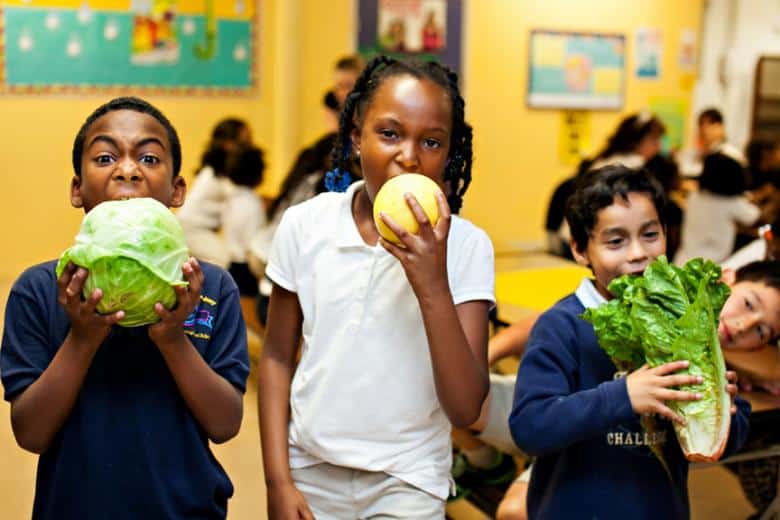
On a broader scale, Amber says you can see a change in the culture of the school. Principals and teachers eagerly await visits from the Food Literacy Center, and the kids are equally excited. “Kinder and first graders are always excited because they’re people pleasers. Fifth and sixth graders might be too cool. What you see happen is as those kindergarteners become fifth and sixth graders, they’ve fallen in love with veggies, they have a great attitude. They’re all food adventurers,” Amber explains. All this means that food services can offer a wider variety of produce. More kids are eating off salad bars and there is less food waste. “They didn’t just build us the building, they saw the program working,” Amber quips.
The secret weapon…
Combating food insecurity and inequity is admittedly an uphill battle. Amber believes that farmers are an integral part of the solution, particularly our small farmers.
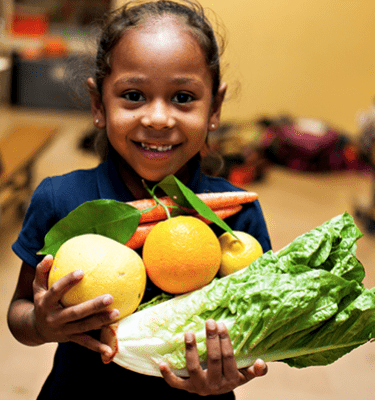
California just became the first state in the nation to offer free school breakfasts and lunches, an important step in reducing food insecurity in school-aged children. School districts have the ability to partner with small farmers to purchase produce for nutrition services. In doing so, school children in California gain access to high quality, locally grown fruits and veggies. “By partnering with them, we can continue to turn the dial,” Amber states.
Food literacy FAQ at a glance
Food literacy is understanding the impact of food choice on our health, environment and economy – and understanding that these impacts are not experienced equitably.
If you live in the Sacramento area, apply to volunteer with Food Literacy Center. If not, use your voice. Call, email or write to your local school board, city council, even state representatives and demand prioritizing farm to school programs. Your voice matters! At home, be a role model. Show your kids that you’re excited about healthy food and veggies. You’ll be surprised how quickly you can help the create healthy habits.
Small farmers are the secret weapon in this battle! School districts have the ability to partner with farmers to purchase produce for nutrition services. Additionally, Farmers have a big voice in the state of California, our legislators care what they have to say. Your opinion matters, so tell them that you want to see more farm to school programs – and ask how you can help.
Knowledge is power! Want to learn more about how your favorite foods are grown? Curious what farm life is actually like? Follow CA Grown on Facebook, Insta and Pinterest to find all the answers to your burning questions. And score some really delicious recipes, too.
Article by Hilary Rance. Photography courtesy of Food Literacy Center and James Collier.
